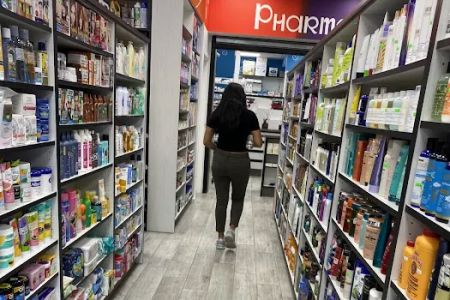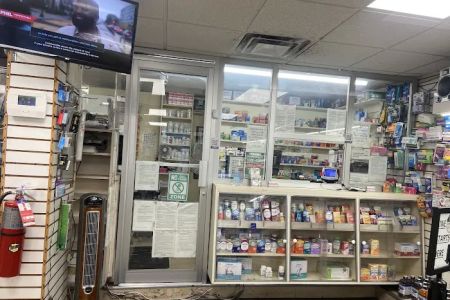How Pharmacies Collaborate with Doctors for Improved Patient Outcomes
In my experience, the best healthcare outcomes often result from collaboration—especially between doctors and pharmacists. As someone who has witnessed the evolution of patient care, I’ve learned that the synergy between these two professions is crucial in ensuring that patients receive the most effective treatment possible. From managing medications to providing patient education, pharmacies play a key role in enhancing the outcomes of medical treatments. In this article, I’ll delve into how pharmacies collaborate with doctors and why this teamwork is so essential for improving patient care.
1. The Role of Pharmacies in Patient Outcomes
Pharmacies are often the unsung heroes in healthcare. While doctors are responsible for diagnosing and prescribing treatment, pharmacists are on the front lines of managing medications and ensuring that patients understand how to properly use them. I’ve seen first-hand how pharmacists work directly with patients to answer questions, provide advice, and monitor how well the medications are working. This involvement is particularly important for patients with chronic conditions who require long-term medication management.
Pharmacists also have the expertise to identify potential drug interactions or side effects, making them invaluable in improving patient outcomes. When doctors and pharmacists communicate effectively, they can adjust treatments to better suit the patient’s needs, improving not only their health but their overall quality of life.
2. Medication Therapy Management: A Key Collaboration
One of the most impactful ways pharmacists work with doctors is through medication therapy management (MTM). MTM is a service where pharmacists review all the medications a patient is taking to ensure that they are appropriate, effective, and safe. This service is especially beneficial for elderly patients or those with complex medical histories, as they often take multiple medications. I’ve witnessed numerous cases where pharmacists identified medication errors or unnecessary prescriptions, leading to significant improvements in a patient’s health.
Doctors and pharmacists share a mutual goal: to improve the patient’s health. When pharmacists engage in MTM, they can provide feedback to doctors, suggest alternatives, and even adjust dosages. This collaborative approach ensures that patients are not only receiving the correct medications but are also able to manage them effectively. It's a partnership that ultimately leads to better health outcomes.
3. Pharmacists as Educators in the Healthcare Team
When it comes to ensuring patient adherence to prescribed treatment plans, pharmacists are key educators. I’ve found that patients are more likely to follow their doctor’s instructions when they understand why the medication is necessary, how it works, and the potential side effects. Pharmacists provide this education, often in a way that is more accessible than the typical doctor-patient interaction.
For example, pharmacists take the time to explain the proper way to take medication, whether it should be taken with food, or what to do if a dose is missed. They also provide tips on lifestyle changes that can improve treatment effectiveness. This education not only helps improve patient compliance but also helps prevent potential medication errors. In collaboration with doctors, pharmacists can create an environment where patients are well-informed and empowered to take charge of their health.
4. Reducing Hospital Readmissions Through Collaborative Care
One of the biggest challenges in healthcare is reducing hospital readmissions, and this is an area where pharmacists can have a profound impact. By working with doctors, pharmacists can help ensure that patients are discharged with a clear understanding of their medications and follow-up care. I’ve seen how this collaboration can drastically reduce the likelihood of readmission due to medication errors or misunderstandings about treatment regimens.
Pharmacists follow up with patients post-discharge to check if they’re taking their medications correctly and if they’re experiencing any side effects. This proactive approach can catch potential issues early, preventing them from escalating into more serious problems. Additionally, pharmacists can remind patients about necessary follow-up appointments, further contributing to their overall health and well-being.
5. The Impact of Pharmacists on Chronic Disease Management
Managing chronic diseases like diabetes, hypertension, and asthma requires ongoing care and adjustment to treatment plans. In my experience, patients who have regular consultations with both their doctors and pharmacists tend to have better control over their conditions. Pharmacists provide continuous monitoring and support, checking in with patients about their symptoms, ensuring their medication is working as intended, and offering advice on how to manage their disease day-to-day.
Doctors and pharmacists often work together to adjust treatments based on how well patients are responding. For example, a pharmacist may notice that a patient’s blood pressure isn’t improving with their current medication and will communicate this to the doctor, who can then recommend a different approach. This type of collaboration creates a dynamic care system where both professionals are contributing to the patient’s well-being.
6. Personalized Care Through Doctor-Pharmacy Partnerships
Perhaps one of the most rewarding aspects of the collaboration between pharmacies and doctors is the ability to offer personalized care to each patient. Every patient is unique, and their healthcare needs can vary greatly. Doctors and pharmacists work together to tailor treatments that are specific to the individual. I’ve seen many patients benefit from this personalized care, especially those with unique health conditions or complex treatment regimens.
For example, in the case of patients with multiple chronic conditions, pharmacists and doctors work together to create a medication plan that minimizes the risk of adverse drug interactions and ensures that all aspects of the patient's health are being addressed. This comprehensive, personalized approach results in better patient outcomes, as each treatment plan is designed specifically for the patient’s needs.
Conclusion: The Power of Collaboration in Healthcare
When pharmacies and doctors collaborate effectively, patients are the ultimate beneficiaries. From medication management to patient education and chronic disease management, this partnership is essential for improving health outcomes. As someone who has seen the positive effects of this collaboration firsthand, I can attest to the fact that when healthcare professionals work together, the results are far greater than what either could achieve alone.
If you are a healthcare professional or patient seeking to improve care through the pharmacy-doctor partnership, consider reaching out to services that specialize in this integrated care approach. Together, doctors and pharmacists can ensure that every patient receives the best possible care.














